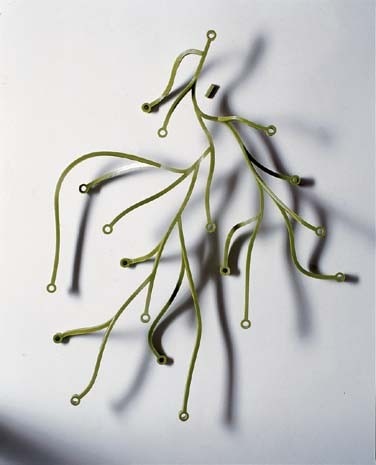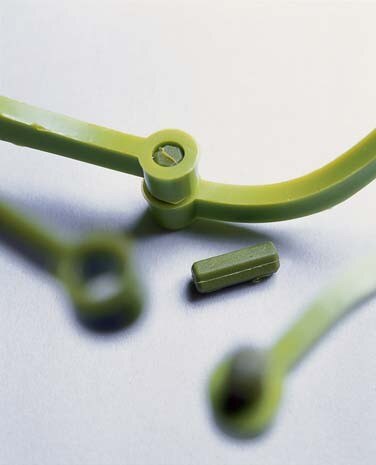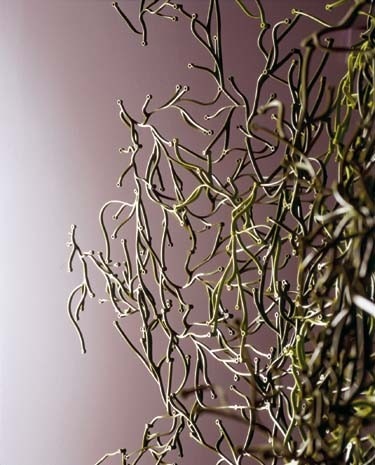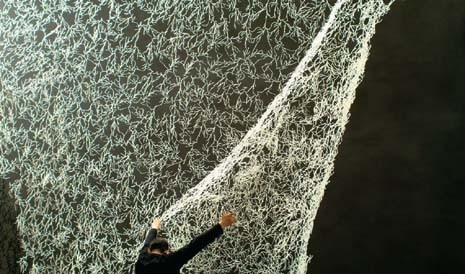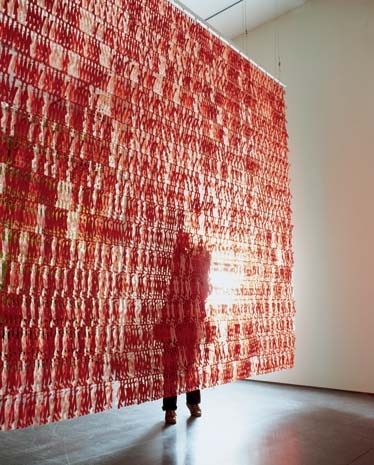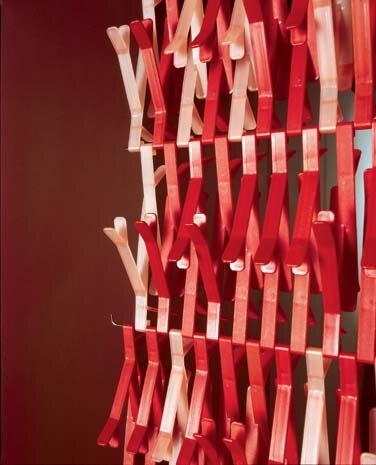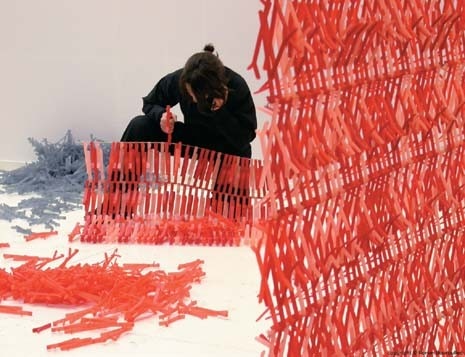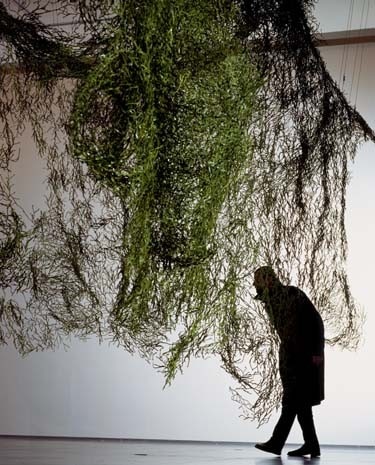‘When Issey Miyake asked Erwan and Ronan Bouroullec to design the A-Poc store in the Marai in Paris, it was the first time the brothers from Brittany had directly tackled the architectural dimension. When we did the job for Miyake it was the first time we did an interior and since then we haven’t done any more; we've been totally disappointed by the quality in the details. In architecture the process of construction tends to be concentrated in time using conventional techniques with traditional materials. This in turn requires a considerable amount of custom-built handwork on site and introduces wide margins of uncertainty.
As industrial designers we are accustomed to reason in terms of industrial production. Making a plastic injection mould for a piece of furniture or manufactured object costs a lot of money. In architecture, making a mould for series production is cheaper, considering the scale to cost ratio. This reduces the use of traditional materials like glass or plaster, which require skilled craftsmanship to ensure the finishing of details. Their quality is all dealt with beforehand and settled in the project stage. Our work stems from the idea of accumulation, the creation of a texture that can grow in space; a process of self-construction requiring no specific techniques or special tools. The system is based on the proliferation of a tiny three-dimensional motif. Each module, as part of a larger whole, possesses dimensions and qualities typical of the industrial product.
The inner logic of aggregation enables it to proliferate to the point of breaking the conventions of scale, and to impose itself on the scale of architecture. This surface that grows like a plant replaces conventional walls generally used to isolate spaces. It also partitions one room from the next while transforming the house into an “assemblage” of containers: one for each specific function.
The first system of geometric modules originated from a specific request: to build a pavilion on the roof of a building in central Paris. Their inspiration originated from the patchwork composition of Parisian rooftops. When the day came to present our project, the client was expecting a big construction.
Instead we arrived with this little piece of plastic and said: ‘Here is the project. All you need is 30,000 of these to build your house. For us plastic is still an invention, a material associated with every possible form. And in fact plastic has enabled us to produce this module that incorporates the concept of aggregation into its design. The modules are joined together in the simplest and most economical way. The repetition of this single elementary component creates an irregular skin while achieving visual richness. After our experience with geometric models structured within a symmetrical pattern, we wanted to increase the level of complexity.
At first sight Algae does not reveal the logic of its underlying possibilities. The connecting joints are situated on different planes, so the construction can grow in all directions in space. All this vanishes in the impression of an irregular form growing spontaneously. Furthermore, the material makes the form flexible, so that it can be deformed to absorb any eventual difference.
In comparison with the results obtained with a more rigid geometric type of module, we wanted to express a different idea of transparency. We were looking for something much lighter but that, when condensed, would allow light to be calibrated and the degree of transparency to be gauged: like lying down under a tree with the sun filtering through the leaves above.
In some points the leaves are much thinner, and in others much denser and opaque to light. We started from the idea of developing different types of walls. Algae proved to be the closest to a vegetal wall. The polystyrene clouds, like Algae or our geometric modules, are designed to grow and interconnect with the perception of space. The final configuration is organised on the basis of a growth pattern that can expand towards infinity while integrating the variables of its context. The final image in everlasting transformation projects a suspended dimension of perception, as if – while looking at the textures of white modules – someone ‘had pressed a button to stop the falling snow’.
From a conversation between Francesca Picchi with Erwan e Ronan Bouroullec, Cologne, January 2004
